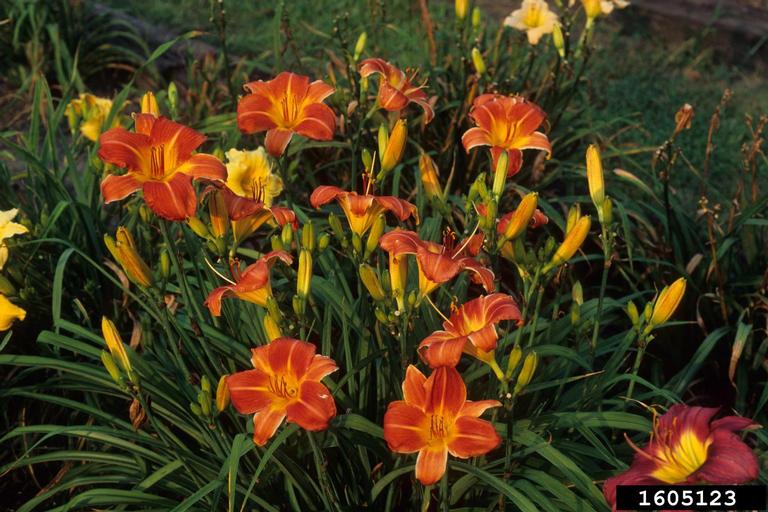By August, our summer starts to get long and hot. Many of our plants have finished blooming or may be having problems with heat stress from the long hot summer. There are, however, a few tough plants that are beautiful and blooming this time of the year. One of my favorites is the Daylily.
Identification
Daylily, Hemerocalis sp., is a low maintenance plant that can survive many different locations. They have grass-like leaves that grow in a clump up to 2 feet tall. The leaves will die back to the ground in the fall and can be cut off at the ground level either in the fall when they turn brown or in the spring if you prefer.
The trumpet-shaped flowers are borne on a leafless stalk that grows up above the leaves. The flower itself can be less than 2 inches to up to more than 8 inches in diameter, depending on the variety planted. The majority of the flowers are 3-4 inches in diameter. They can be found in most any color; the very popular Stella D‘Oro daylily has golden-yellow flowers.
Growing Daylilies
Daylilies can be grown from seed or from divisions of the main plant. Due to all the varieties and changes made over time, growing daylilies from seed will rarely, if ever, get you the same color as the plant you saved the seed from. Dividing existing plants is much easier.
Daylilies prefer to live in full sun but will tolerate light shade. They are a tough plant that is often planted in the locations of full, hot sun against a brick building on the west or south side. They will do fine in this location, but with a little light shade in the hot part of the day, the flowers look even better.
Daylily Leaf Streak
The daylily is well-adapted for our environment, but the plants can face a few disease and insect issues. The most damaging would be Daylily leaf streak, a fungal disease. This disease causes yellow streaks along the mid-rib of the leaf along with brown spots. The leaves may eventually wilt and die completely. This disease, however, can be controlled with sanitation. Avoid overhead watering, remove infected leaves, remove all foliage in the fall, and fungicides can be used if desired to slow the disease development.
The daylily is not a true lily, it is no longer in the lily family, but it is a great plant with beautiful flowers. Daylilies are work-horse plants that can be planted in most locations in the garden and can be found in most any flower color desired. There are very few insect and disease problems that face the daylily, making it a great addition to your landscape. So the next time you need to plant a long-blooming, hardy plant, look at daylily.

